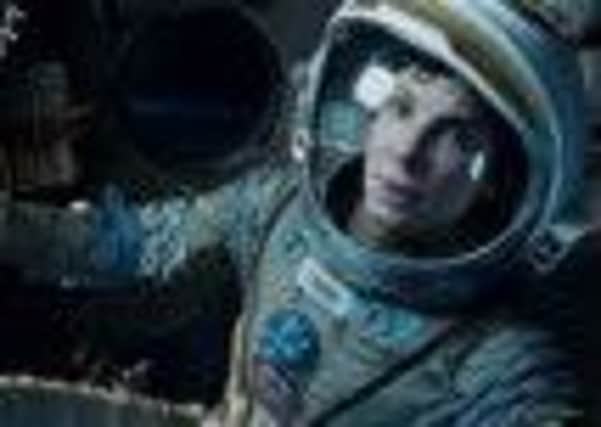Andrew Eaton-Lewis: Gravity’s earthbound companion


Neither can speak the other’s language, so they talk at cross-purposes. He thinks her name is Mayday. She doesn’t know that the dog whose barking has briefly lifted her mood is sick and about to be shot. And yet, despite all this, there is a tiny, poignant moment of connection before the transmission is abruptly cut off, as the pair make dog noises at each other and the man’s baby reminds the astronaut of her own lost daughter.
The artful Aningaaq is a companion piece to the space thriller Gravity, which has been such a big hit in the past few weeks that a short film conceived as a DVD extra is now being entered for the Oscars alongside the main feature. It deserves to be, because it’s very moving in its own right. On one hand, the scenario is utterly bleak, as a woman desperately scanning the airwaves for help finds a man in no position to offer it even if he did understand what she was saying. On the other, the man is able to offer a frightened stranger a moment of comfort.
Advertisement
Hide AdIt’s possible to appreciate Aningaaq without having seen Gravity. If you have, though, the comparisons are fascinating. Both begin with a slow tracking shot across a vast, forbidding place until a pocket of human life reveals itself. Both go on to demonstrate how precarious human life is in these giant spaces. Some religious writers have suggested Gravity is a celebration of God – based on George Clooney’s final scene and the use of the words “thank you” at a key moment. No-one is likely to say this about Aningaaq. The world it portrays is a lonely, godless one; not only is its moment of consolation random and accidental, the man who provides it remains oblivious to what he has done.
Not typical Hollywood fare, then. But then neither is Gravity. Director Alfonso Cuaron recently revealed what sort of film it might have been had he caved in to studio requests. There would have been scenes at Mission Control, flashbacks to Sandra Bullock’s life with her daughter, probably a contrived romance.
A by-the-numbers blockbuster, in other words.
Instead, remarkably, Gravity is as much of an art film as Aningaaq. For all its awe-inspiring visuals, like Aningaaq much of its power comes from what it doesn’t show. The first time you see the faces of any of Bullock and Clooney’s crewmates, they are already dead. Later, as things seem utterly hopeless, the Northern Lights shine breathtakingly below Bullock’s tiny spacecraft, but there’s no indication that she’s even noticed. Much of the drama comes from a question that’s never answered: can anyone hear anything she’s saying? When she finally crashes to Earth, there is no-one to greet her. Instead, her triumph is signalled by the way she is framed, from below, transformed from a speck in the darkness into a giant, a significant presence in the universe for the first time.